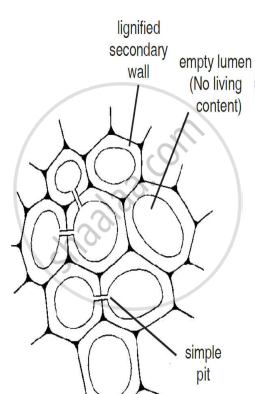Advertisements
Advertisements
प्रश्न
What is simple tissue? Classify and explain its different types with suitable diagram.
उत्तर
Simple tissue:
These tissues are composed of structurally and functionally similar cells.
They are of three types.
(i) Parenchyma:
It is widely distributed in plant bodies such as stems, roots, leaves, flowers, and fruits. Its cells are isodiametric and contains live protoplasm. It serves as a food storage and packing tissue. It also stores waste products of plants.

(ii) Collenchyma:
It is located below the epidermis of dicot stem and petiole. It consists of living cells and is characterised by an extra deposition of cellulose at the corners. It is a mechanical tissue in young plants. It also provides elasticity to the plant, particularly stem of dicots.


(iii) Sclerenchyma:
It consist of dead lignified cells. It has two types of cells—that is, fibres and sclereids. It occurs in abundance or in patches in definite layers in stems, roots, veins of leaves, hard covering of seeds, and nuts. It provides mechanical support to the plant.

APPEARS IN
संबंधित प्रश्न
What is the difference between parenchyma and collenchyma?
What are the functions of phloem?
Differentiate between cells of Parenchyma and Collenchyma.
Differentiate between cells of Meristematic tissue and Permanent tissue
Study the diagram given below and then answer the question that follows:

Where is this tissue likely to be found in the plant?
Name the tissue associated with the following:
Movement of food in the plant body
Explain sclereids with their types.
What are sieve tubes? Explain.
The cells or tissues of plants which have lost the power of division are called
In which of the following pairs of parts of a flowering plant is epidermis absent?
